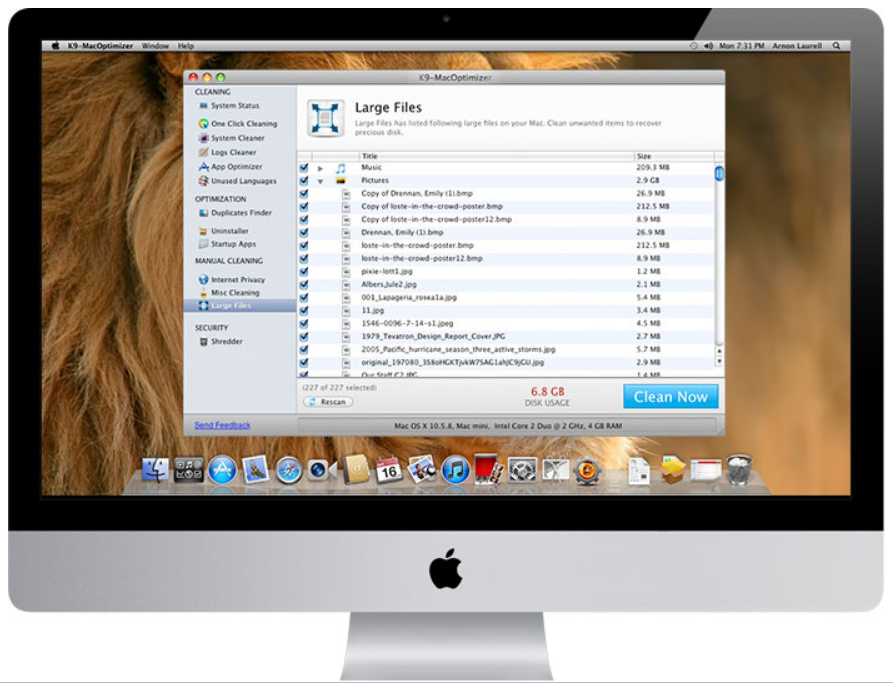
- #Instal macoptimizer how to
- #Instal macoptimizer install
- #Instal macoptimizer update
- #Instal macoptimizer pro
Locate this app called Activity Monitor and double click to open it.Open Finder > Applications > Utilities.To find out which applications/services are over-consuming your system power, follow the steps below: It’s usually fine when these programs are working with a big photo or rendering a video effect, but if they are constantly taking more share than they should, something is probably wrong.
#Instal macoptimizer pro
Big programs like Photoshop, Camtasia, and Final Cut Pro tend to use much more power than smaller ones. Find and Quit Resource-hungry Apps via Activity Monitorīest for: When your Mac is slow when running specific applications.Īnother reason for macOS Monterey running slow is that those resource-hungry applications are taking away too many system resources while running. You should notice some speed gain when you reboot your Mac machine. Select those you don’t want and hit the Remove button. You’ll see a list of small helper and service applications that automatically run after your Mac boots up.Click on Optimization > View All Items > Launch Agents.Select these apps that you don’t need to auto startup and hit the minus “ –” option.Click on System Preferences > Users & Groups > Login Items.Click on the Apple menu from the top left corner.The fewer programs that run automatically on startup, the faster your Mac will be. Take a look at what startup apps or auto launch agents you have running and stop as many of these from opening as possible. Disable Startup Items (Apps & Hidden Launch Agents)īest for: When your Mac is slow to start up. If you find that your Mac is too old to run macOS Monterey, it’s probably a good idea to revert to an older version since you’ll encounter more performance issues after updating and there aren’t many tricks you can play around with to speed up your machine. Also, the installer file of macOS Monterey is 12GB, but you’ll need at least 35GB of free storage on your Mac for the new system to run, preferably 50GB or even more. If your Mac machine is showing its age, it’s going to have a difficult time running the latest operating system, or even not compatible with the latest version at all.Ĭlick here to learn the list of macOS Monterey supported Macs and check whether your Mac is on the list or not. Every new macOS that Apple has released has a minimum requirement on hardware. Technically speaking, this is not a fix but it’s worth checking as the first step. Check Whether Your Mac is Compatible with Monterey
#Instal macoptimizer install
Clean Install (Re-install) macOS Montereyġ. Find and Quit Resource-hungry Apps via Activity Monitor Disable Startup Items (Apps & Hidden Launch Agents) If one particular fix doesn’t work, try another one.

Note: there are many possible reasons behind a slow Mac, we’ll start with the basic fixes. We are going to share with you some of the best tips and tricks.
#Instal macoptimizer how to
If you are facing one of those macOS Monterey slow issues with your Mac (iMac, MacBook Pro, MacBook Air), read on to find out how to fix it.
#Instal macoptimizer update
We are all excited about the new macOS and hit the update button, only to find our Mac experiencing performance issues such as the machine runs slow after updating to macOS Monterey. Upgraded FaceTime, Universal Control across devices with single mouse or trackpad, improved Safari browsing experience, privacy enhancements, the list go on. Although the new macOS 12 Monterey is a smaller update compared to Big Sur, it’s still packed with lots of amazing features.


 0 kommentar(er)
0 kommentar(er)
